Abstract
The ultimate goal of toxicologic investigations of both natural and man-made fibrous and nonfibrous particles is to provide essential input for the assessment of potential human risks from exposure to these materials. The development of risk assessment procedures for airborne particles has evolved over the years. The earliest assessments for naturally occurring materials used direct human observations and incorporated safety factors to arrive at allowable human exposures. More recently, there has been a need to assess the potential risk associated with production and use of certain man-made materials for which human data are not available or are inadequate. For these materials, it has been necessary to assess human risks using data obtained from studies conducted in laboratory animals and with cells or tissues. During the last several decades, it has been suggested that data on the mechanisms by which particles cause disease could be used to reduce the uncertainty in estimates of human risks of particle exposures. This article provides comments on the use of mechanistic data in the risk assessment process and suggestions for increasing the successful development and use of mechanistic data in risk assessments conducted in the future.
Full text
PDF


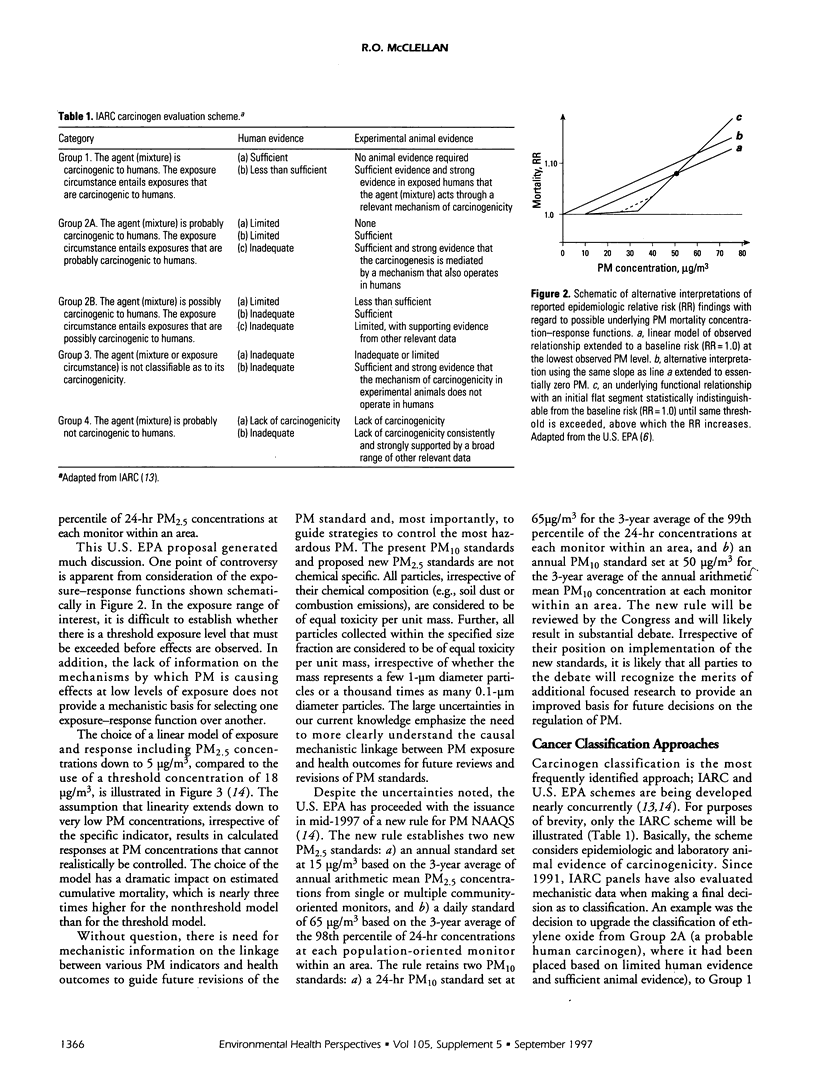
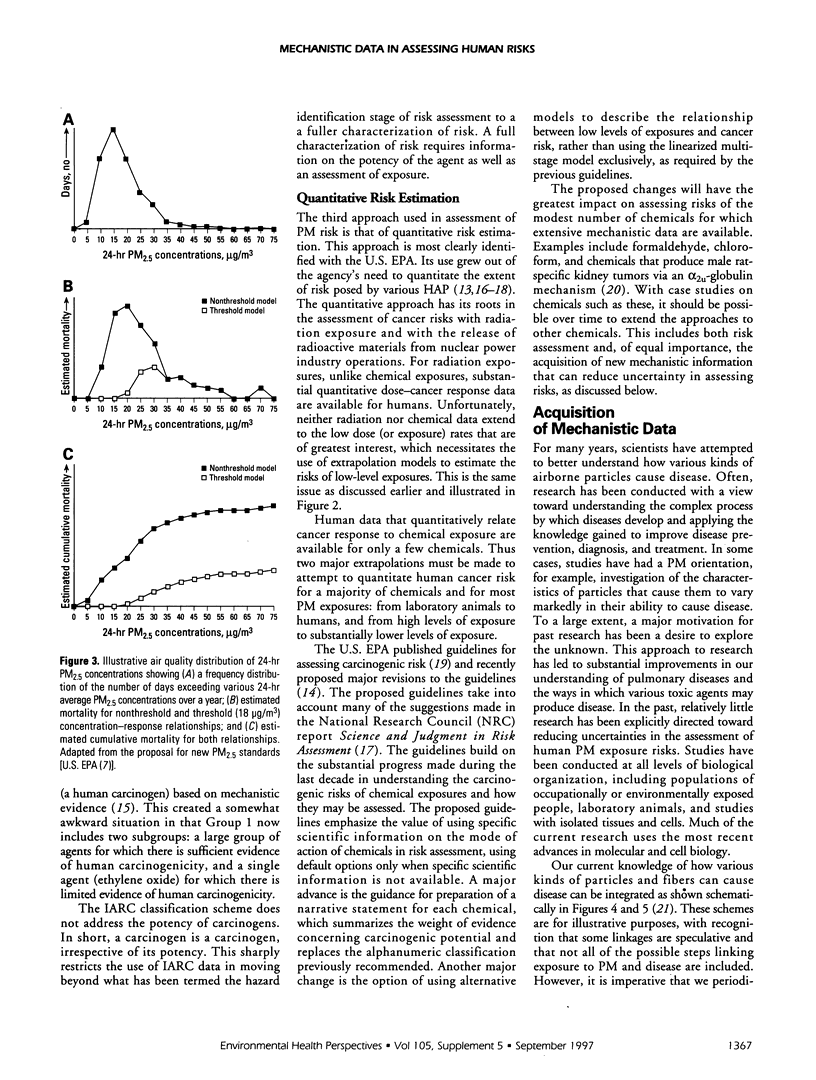
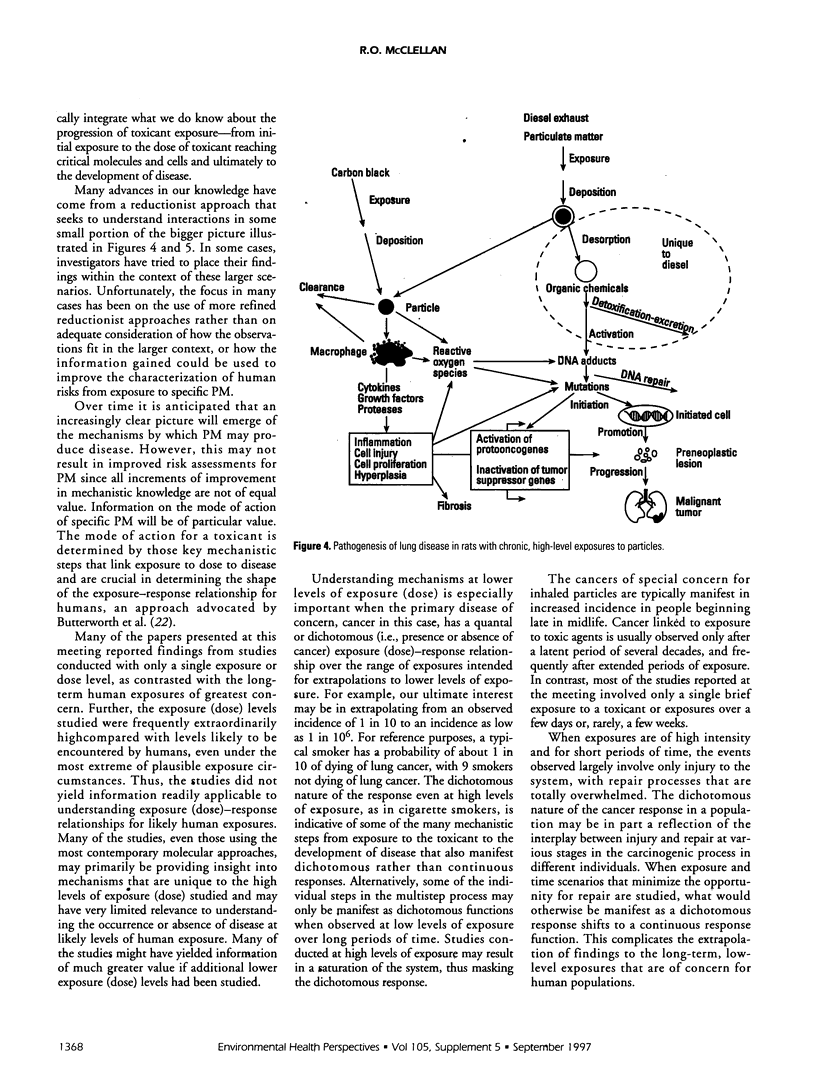
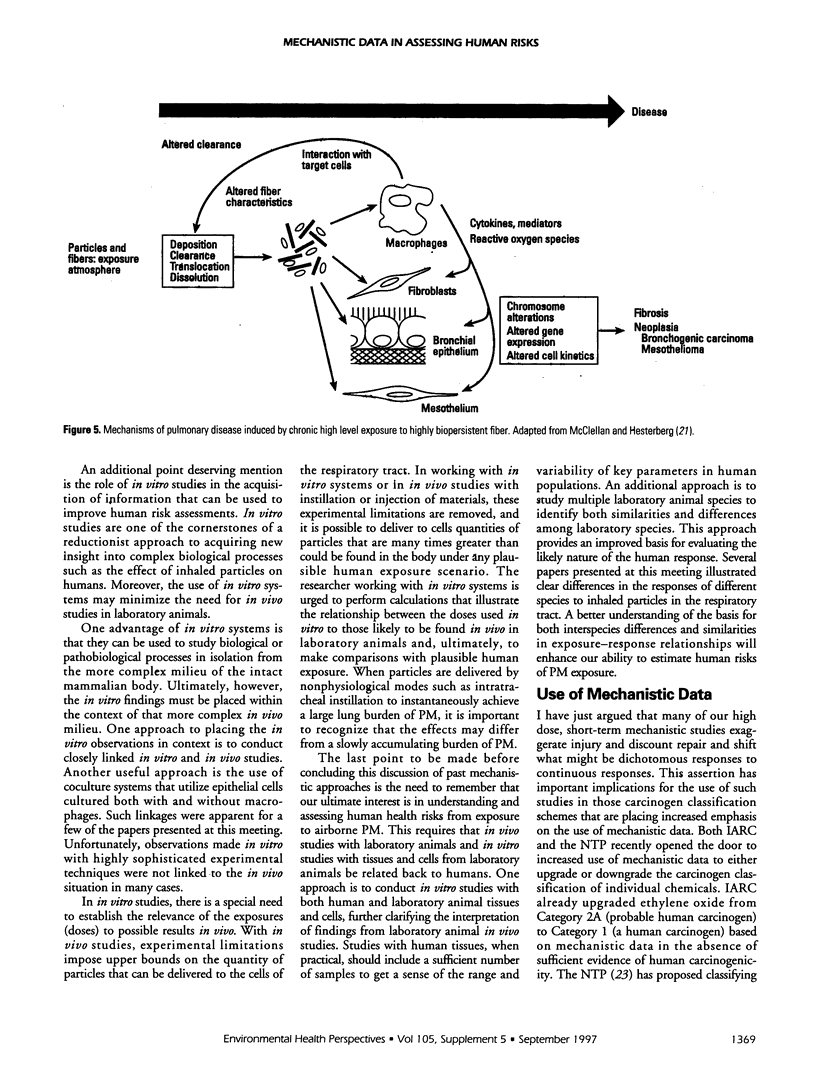
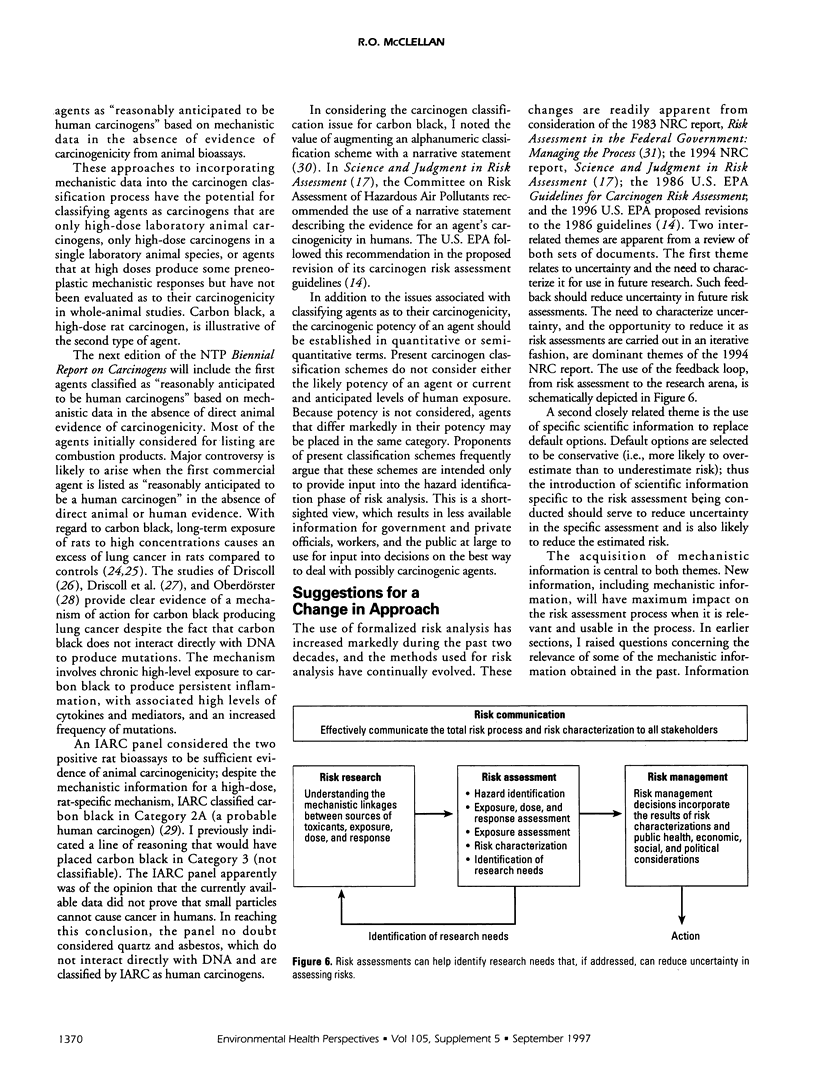
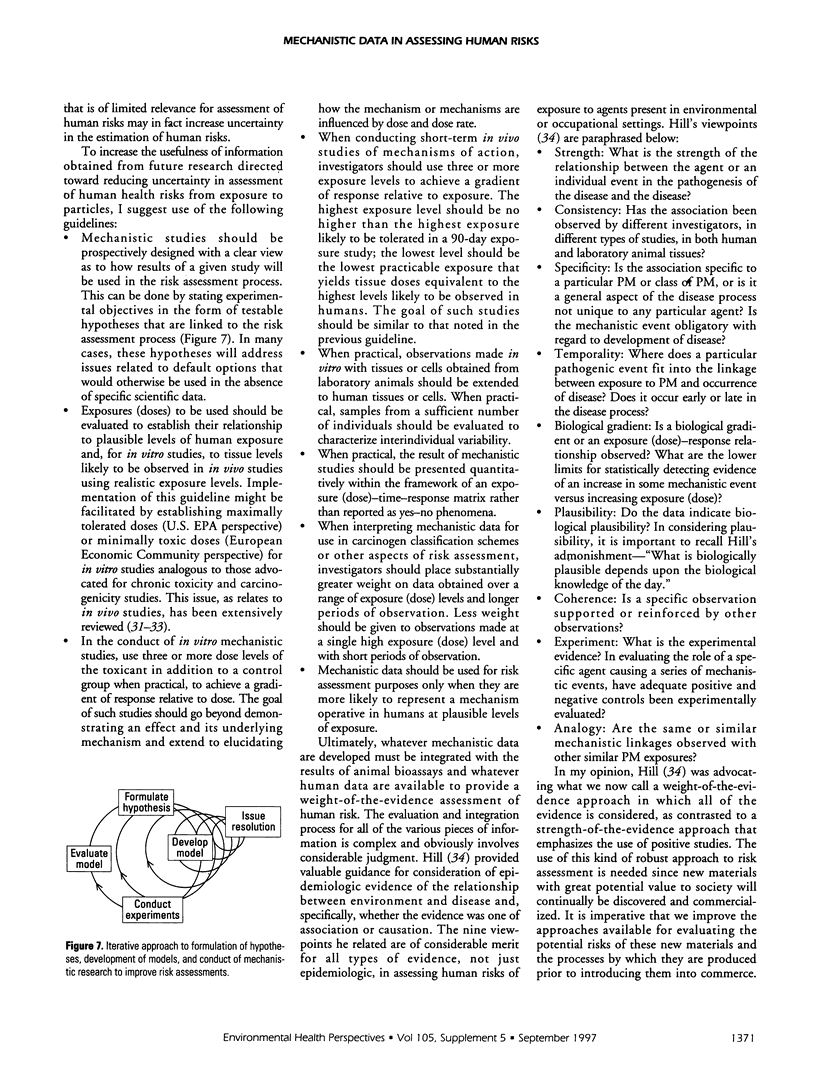
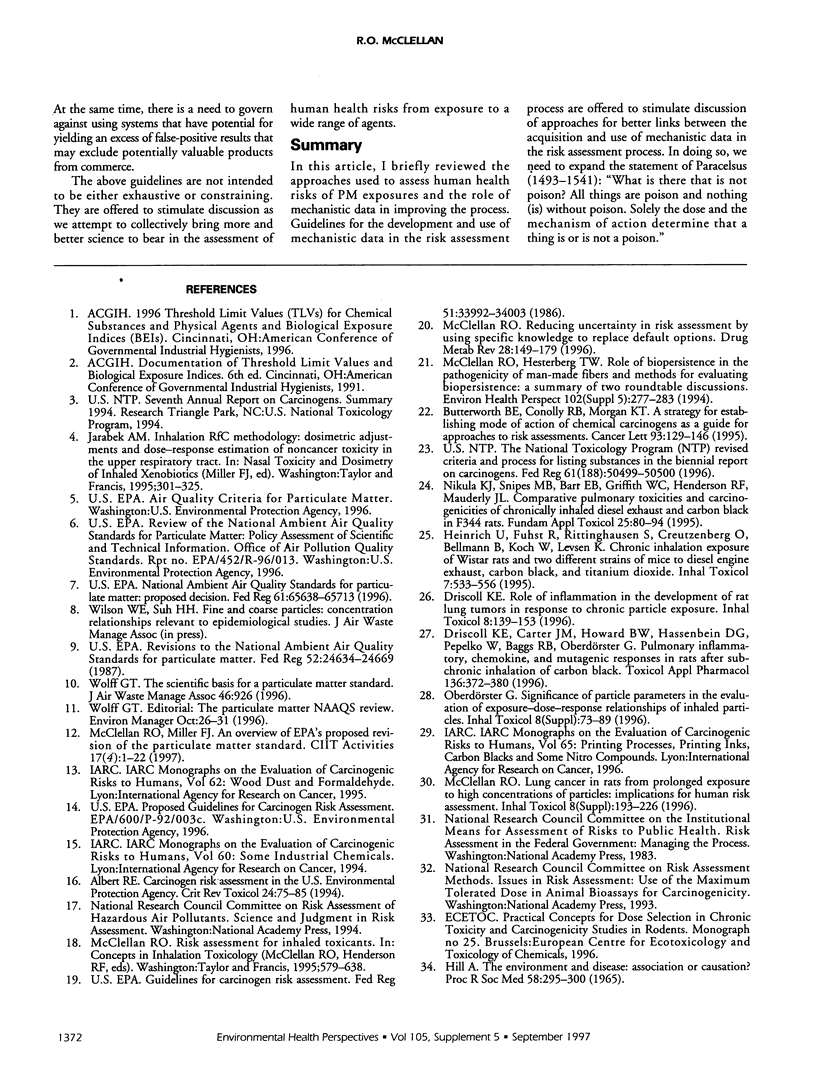
Selected References
These references are in PubMed. This may not be the complete list of references from this article.
- Albert R. E. Carcinogen risk assessment in the U.S. Environmental Protection Agency. Crit Rev Toxicol. 1994;24(1):75–85. doi: 10.3109/10408449409017920. [DOI] [PubMed] [Google Scholar]
- Butterworth B. E., Conolly R. B., Morgan K. T. A strategy for establishing mode of action of chemical carcinogens as a guide for approaches to risk assessments. Cancer Lett. 1995 Jun 29;93(1):129–146. doi: 10.1016/0304-3835(95)03794-W. [DOI] [PubMed] [Google Scholar]
- Driscoll K. E., Carter J. M., Howard B. W., Hassenbein D. G., Pepelko W., Baggs R. B., Oberdörster G. Pulmonary inflammatory, chemokine, and mutagenic responses in rats after subchronic inhalation of carbon black. Toxicol Appl Pharmacol. 1996 Feb;136(2):372–380. doi: 10.1006/taap.1996.0045. [DOI] [PubMed] [Google Scholar]
- HILL A. B. THE ENVIRONMENT AND DISEASE: ASSOCIATION OR CAUSATION? Proc R Soc Med. 1965 May;58:295–300. doi: 10.1177/003591576505800503. [DOI] [PMC free article] [PubMed] [Google Scholar]
- McClellan R. O., Hesterberg T. W. Role of biopersistence in the pathogenicity of man-made fibers and methods for evaluating biopersistence: a summary of two round-table discussions. Environ Health Perspect. 1994 Oct;102 (Suppl 5):277–283. doi: 10.1289/ehp.94102s5277. [DOI] [PMC free article] [PubMed] [Google Scholar]
- McClellan R. O. Reducing uncertainty in risk assessment by using specific knowledge to replace default options. Drug Metab Rev. 1996 Feb-May;28(1-2):149–179. doi: 10.3109/03602539608993997. [DOI] [PubMed] [Google Scholar]
- Nikula K. J., Snipes M. B., Barr E. B., Griffith W. C., Henderson R. F., Mauderly J. L. Comparative pulmonary toxicities and carcinogenicities of chronically inhaled diesel exhaust and carbon black in F344 rats. Fundam Appl Toxicol. 1995 Apr;25(1):80–94. doi: 10.1093/toxsci/25.1.80. [DOI] [PMC free article] [PubMed] [Google Scholar]
- Oberdorster G. Significance of particle parameters in the evaluation of exposure-dose-response relationships of inhaled particles. Inhal Toxicol. 1996;8 (Suppl):73–89. [PubMed] [Google Scholar]


